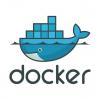 |
Strengthening System Resilience with Chaos Engineering Testing continuous technological change can seem like chaos. There are many challenges that need to be managed, such as unavailability of power, excessive temperature, incorrect configuration, unexpected behavior of services, network downtime, and processing slowdown in production. By deliberately engineering chaos, we’ll be able to discover many of our systems’ weaknesses before our users do. |
|
 |
Why You Should Be Talking Less Agile and More Flow “Flow,” defined as the movement of business value from customer insight to product delivery, is a fundamental prerequisite to agile success. Surfacing and visualizing the end-to-end workflow is a foundational requirement for enabling companies to master software-based solutions at scale. To take agile forward, you first need visibility into flow through these essential metrics. |
|
 |
How Docker Enables Agile Software Development Docker has revolutionized how software is packaged, distributed, and deployed, so it's easy to see why it has become the de facto containerization platform. But have you thought about how Docker actually makes software development, testing, delivery, and deployment more agile? Let's look at how Docker inherently supports several of the founding principles of agile software development. |
|
 |
Agile Project Management: 10 Tips from the Masters In today’s fast-paced world, organizational agility is critical to business success. However, it’s common for there to be a clash between the traditional top-down business culture and the agile business philosophy. Agile project management is not just a set of processes and predetermined activities, but rather a genuine philosophy that forces organizations to embrace a brand-new mindset. |
|
 |
How to Nail Agile Collaboration and Build Better Products The rapid rate of technological change is forcing enterprises to reinvent themselves and provide more flexible approaches, so agile transformations are key. However, knowing that agile is important is one thing, but the ability to properly implement the main principles, tools, and techniques of agile is another. Let’s explore time-tested agile principles that will help your organization build innovative products that customers love. |
|
 |
Agile Value Delivery: A Critical Component of Virtual Meetings The recent surge in virtual meetings necessitates an entirely new set of desirable behaviors. But how do you keep participants engaged and material useful and on topic remotely, when it's hard enough to do that with everyone in the same room? The key is keeping value delivery front and center. Here are some tips and best practices for virtual meetings that will help you continue to deliver value. |
|
 |
Solving 6 Major Challenges of Implementing Agile Implementing agile often means throwing out the rulebook when it comes to how teams work, how projects are organized, and even what the office floor plan looks like. This can be a difficult transition, but it's nothing to fear if you can anticipate the challenges and plan accordingly. Here are six of the greatest challenges teams face when implementing agile, along with some tips on how to avoid them. |
|
 |
How to Accelerate Your Release Cycles with Agile Testing With the traditional waterfall method of testing, achieving quality and faster time to market is difficult. Agile testing has emerged as an alternative, where development and testing take place simultaneously instead of operating in their respective silos. Let’s look at what it means to perform agile testing, what practices are necessary, and how agile testing can benefit your software releases. |
|
 |
Testing in Agile: How to Get Started There is a lot of interest in organizations around a transformation to agility. However, the focus is usually on agile development, so it may not be clear how software testing is done in agile. If you're responsible for leading your testing teams, don't let them be left behind. Here’s how you can make testers part of the transformation, too—step by step, because this is agile, after all. |
|
 |
6 Anti-Patterns Preventing Agile Teams from Self-Organizing People have different cultural backgrounds, habits, beliefs, interests, capabilities, knowledge, skills, and temperaments. When put together on a team, they can’t always be governed by a rulebook to become self-organized. The dynamics among them have to be understood to recognize the anti-patterns first. Here are six anti-patterns that must be avoided and remediated to help teams move toward self-organization. |
Pages
Upcoming Events
| Apr 27 |
STAREAST Software Testing Conference in Orlando & Online |
| Jun 08 |
AI Con USA An Intelligence-Driven Future |
| Sep 21 |
STARWEST Software Testing Conference in Anaheim & Online |












